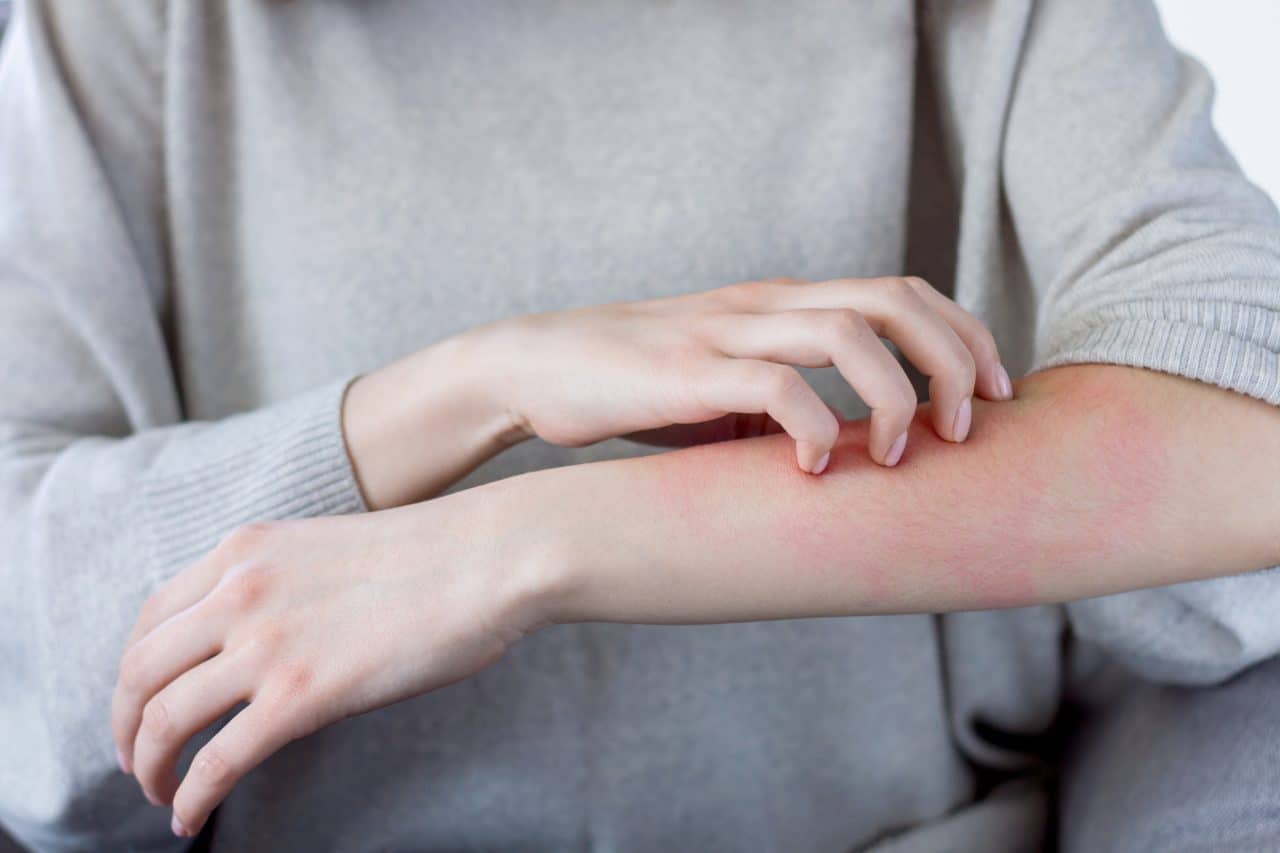Contact dermatitis is an inflammatory skin disease that results from coming into contact with a skin irritant. The most common symptom of contact dermatitis is an itchy, discolored rash that can be red, dark brown, purple or gray.
Other common symptoms include blisters, a burning sensation, and skin that is dry, cracked and flaky.
Common Triggers for Contact Dermatitis

While many people might not have a reaction when encountering certain irritants, these are some of the most common triggers for contact dermatitis:
- Poison ivy, oak and sumac
- Nickel and gold jewelry
- Latex
- Rubber
- Bleach and detergent
- Battery acid
- Pepper spray
- Fragrances in perfumes and soaps
- Topical medications
- Citrus fruit
- Hand sanitizer
- Hair dye
- Preservatives found in cosmetics
Types of Contact Dermatitis
There are three main types of contact dermatitis. They are categorized based on what type of trigger causes symptoms.
- Irritant contact dermatitis is the most common type of contact dermatitis. Causes of contact dermatitis include things like chemicals, friction and heat. The rash will occur at the site of contact. Several factors can impact the severity of the rash including the concentration level of the irritant, duration and frequency of exposure. The type of skin exposed can also play a factor in severity.
- Allergic contact dermatitis occurs when your immune system produces an allergic response to a substance. Nickel is the most common cause of allergic dermatitis in the United States. Poison oak and poison ivy are other common triggers. Most cases are mild, but in rare instances severe reactions can occur.
- Photocontact dermatitis occurs when you come into contact with both a substance and sunlight at the same time. This could be a type of lotion or a medication you’re taking. Exposure to sunlight is necessary to trigger a reaction in photocontact dermatitis.
Contact Dermatitis Treatment
Usually, the rash and other symptoms of contact dermatitis will subside after exposure to the irritant is over. If the rash was more severe, it may need more time to heal. In that case, people can often find relief with over-the-counter creams or antihistamines.
If the rash is severe or persists, we recommend booking an appointment with a dermatologist so that they can assess your condition and offer prescription treatments.
How to Prevent Contact Dermatitis
Avoiding exposure to known irritants is the best way to prevent contact dermatitis. This means keeping an eye out for poison ivy when you’re walking through the Scarborough Marsh Nature Trail. However, sometimes avoidance isn’t that simple.
Many common products contain substances that can cause reactions. If you experience contact dermatitis, particularly the allergic variety, you may require allergy testing to accurately diagnose what is causing your symptoms.
To learn more about testing and treatment options, or to schedule an appointment, call Benjamin Liess, MD, of ENT Maine today.